Washington Avenue is many things to many people. For contractors, it’s a centrally located hub where they can pick up building materials and illegally park in the median with relatively little fear of getting a ticket. For the building supply companies that sell stuff to those contractors, it’s a wide street that’s accessible for eighteen wheelers and allows for easy double parking when customers are picking up materials. For pedestrians and bikers, it’s a terrifying thunderdome, where cars are speeding by faster than they should, while bike lanes and cross walks have faded to the point of being unrecognizable. For developers, it’s a land of opportunity- a wide street that could accommodate transformational height and density- if only the zoning would allow it.
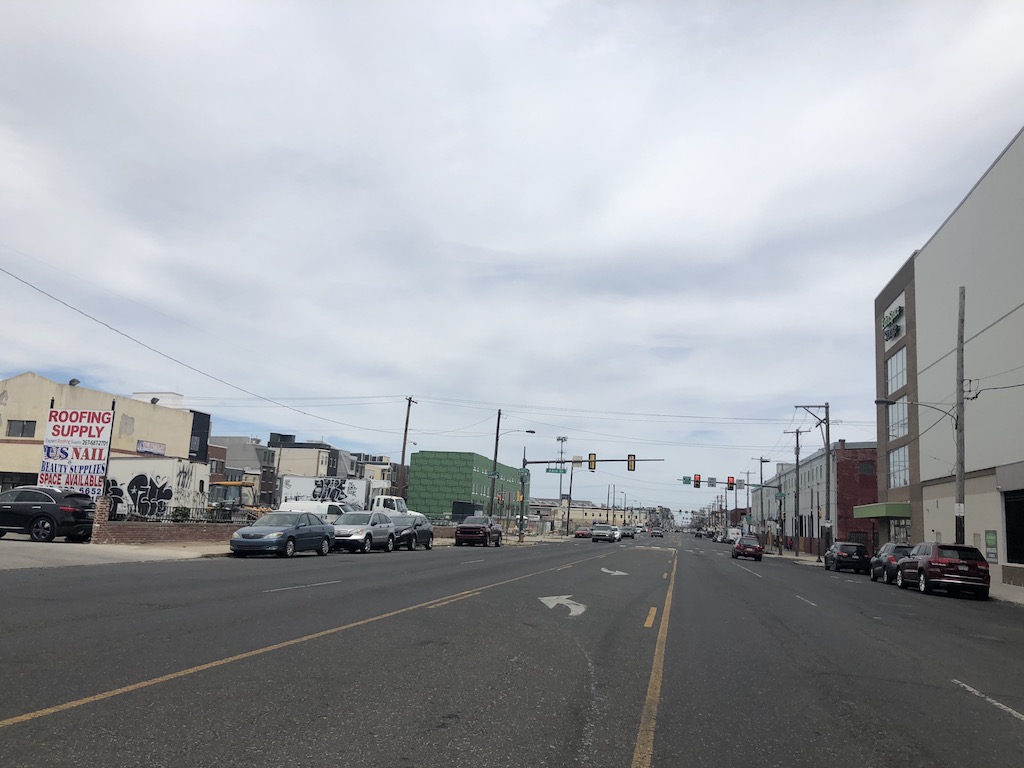
Remarkably, Washington Avenue has not been repaved since 2003. Next year, assuming the City has any money (just kidding it’s Federal money, so this is actually assuming the Federal government has any money), it will finally be repaved again. In planning the repaving of any street, the City looks at a number of factors, including how well the street functions, safety for pedestrians and cyclists, parking and loading rules, and bus routes. Because of its size and prominent location, all of these factors must be balanced, while also considering input from businesses on the corridor, property owners, and residents in the neighborhoods to the north and south. Amazingly, we first reported on repaving / re-striping plans for Washington Avenue six years ago, but those plans never came to fruition, perhaps because those groups couldn’t agree on a path forward.
Now that it’s finally happening, you have the opportunity to take part in the planning process, and you don’t even have to suffer through a soul crushing community meeting to make your voice heard. The Office of Transportation, Infrastructure, and Sustainability (oTIS) has put together an online survey in which respondents can provide feedback on three possible approaches to repaving Washington Avenue. Helpfully, they’re recommending that you watch some informational videos before taking said survey so you can make the most informed recommendations possible.
Check out these screen grabs from when we took the survey:
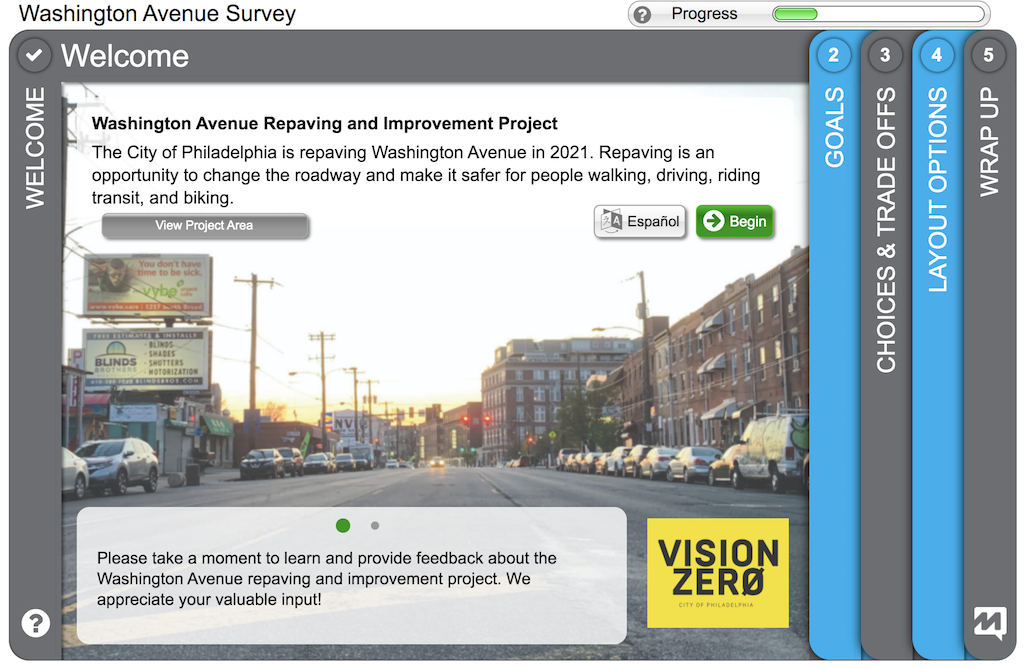
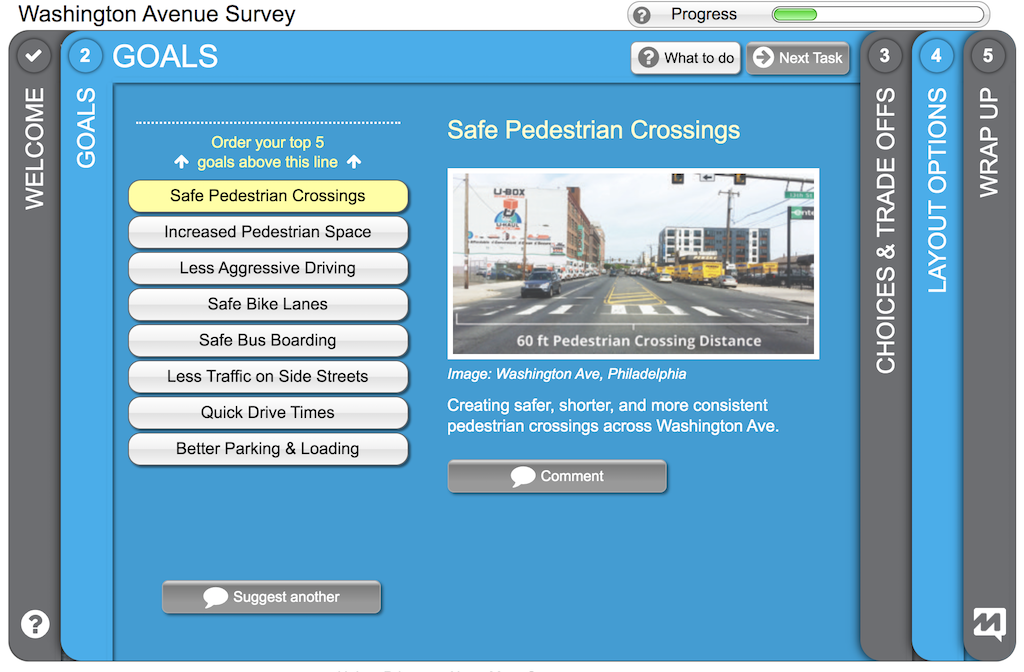
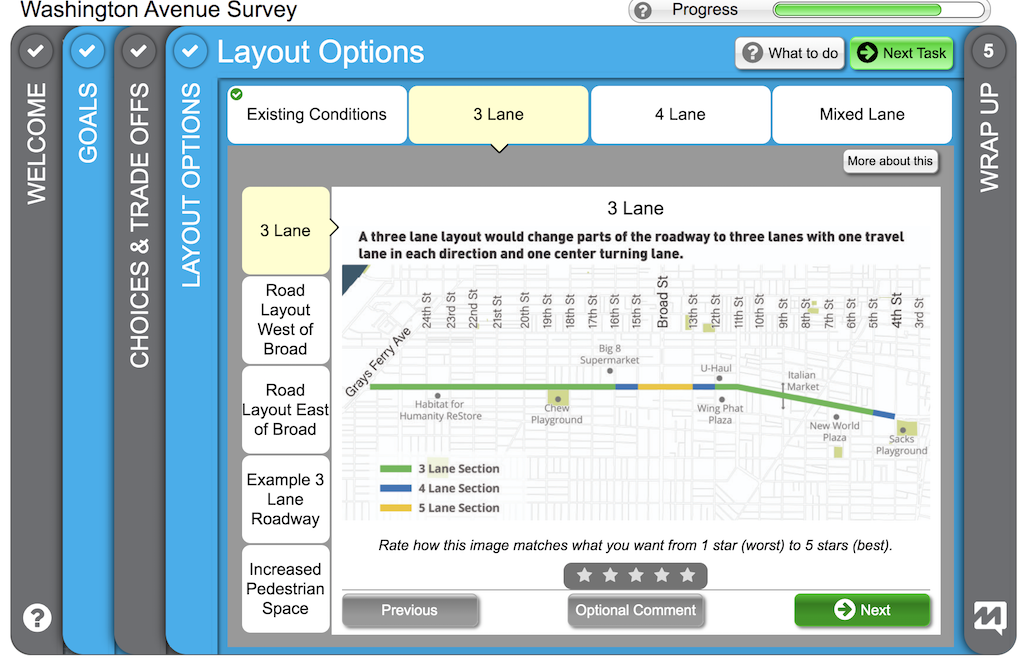
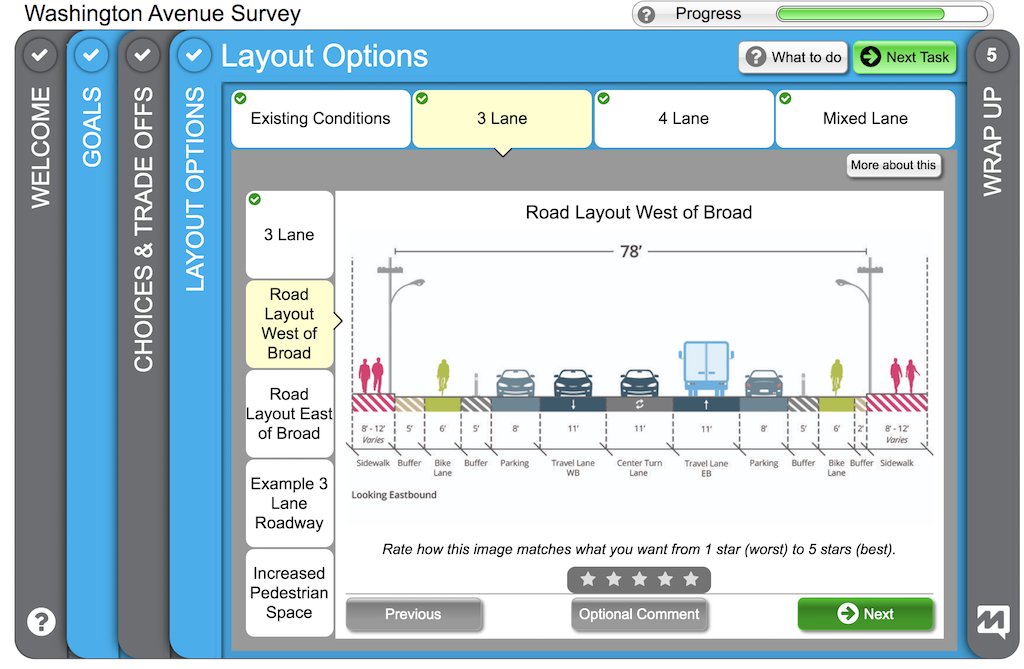
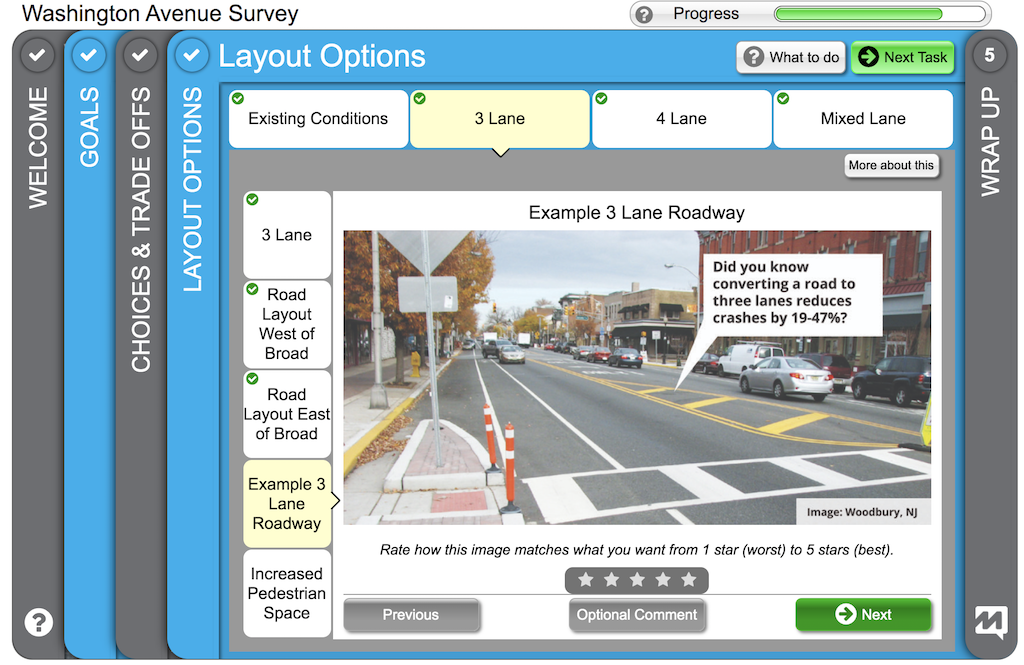
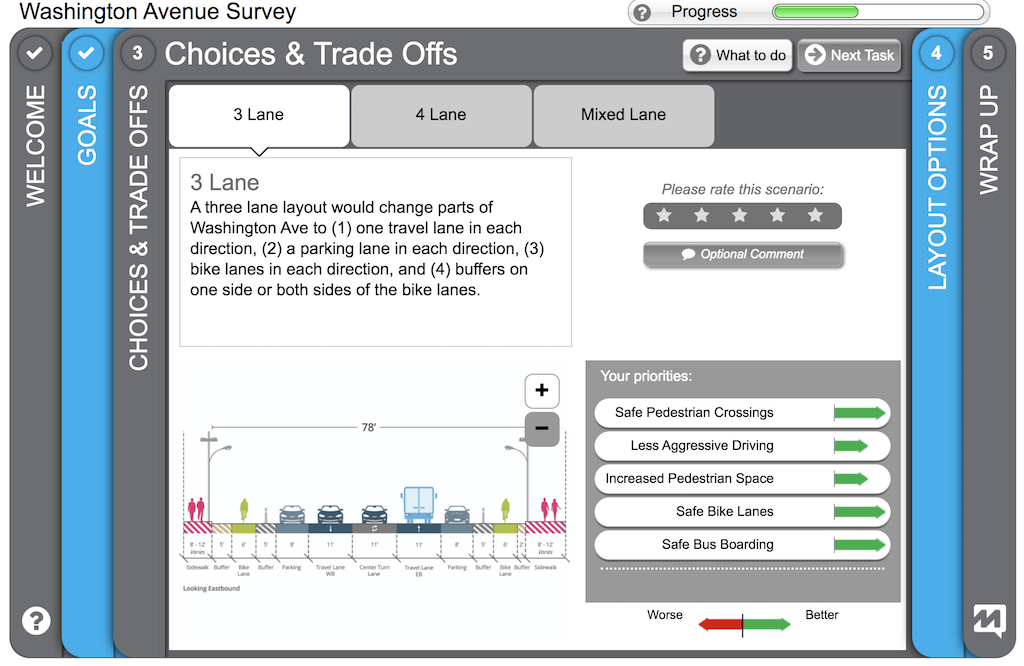
The three options under consideration are 1) a three lane road, 2) a four lane road, 3) a mixed layout. The three lane plan would transition Washington Avenue to three lanes for most of its length, aside from the stretch around Broad Street, to accommodate additional traffic volume. This would certainly make the corridor more friendly to pedestrians and bikers, improve the safety of bus stops, and would also allow for expanded sidewalk areas west of Broad Street.
The four lane approach would still be an improvement over the status quo. Since most traffic on Washington heads toward Broad Street, this plan would call for two lanes in each direction heading toward Broad, and one heading away from Broad, with a turning lane in the middle. This would not allow for expanded sidewalks and it would entail buses and bikes coming together at bus stops on the one-lane side of the street, which seems less than ideal. But it would still represent an improvement for pedestrians and bikers over the current five-lane road.
The mixed layout is, as the name suggests, a mix of the two plans, with some areas containing three lanes, some containing four lanes, and the area around Broad Street containing five lanes. This would be a classic split the baby proposal, with the some of the benefits of the other approaches, and some of the drawbacks as well. Some sections of sidewalk will be expanded, but that won’t be possible in other areas. Some bus stops will be isolated from the bike lane, while others will cross into the bike lane. Some sections will feature a reasonable distance for pedestrians while other sections will still require a race against oncoming traffic.
What’s the best approach? We would advocate for the three-lane approach, especially in light of the mixed-use direction we see Washington Avenue heading. Given the politics involved, we have a feeling the mixed layout will be the approach that ends up getting implemented, even though we have a real concern that it will be confusing for drivers to constantly account for changing numbers of lanes as they drive across Washington Avenue. Perhaps the best news is that this is actually happening and whatever approach ends up moving forward, we will be seeing shorter pedestrian travel distances and protected bike lanes on Washington Avenue no matter what. This will mean a safer corridor, and one that finally relates more appropriately to its present and its future.
